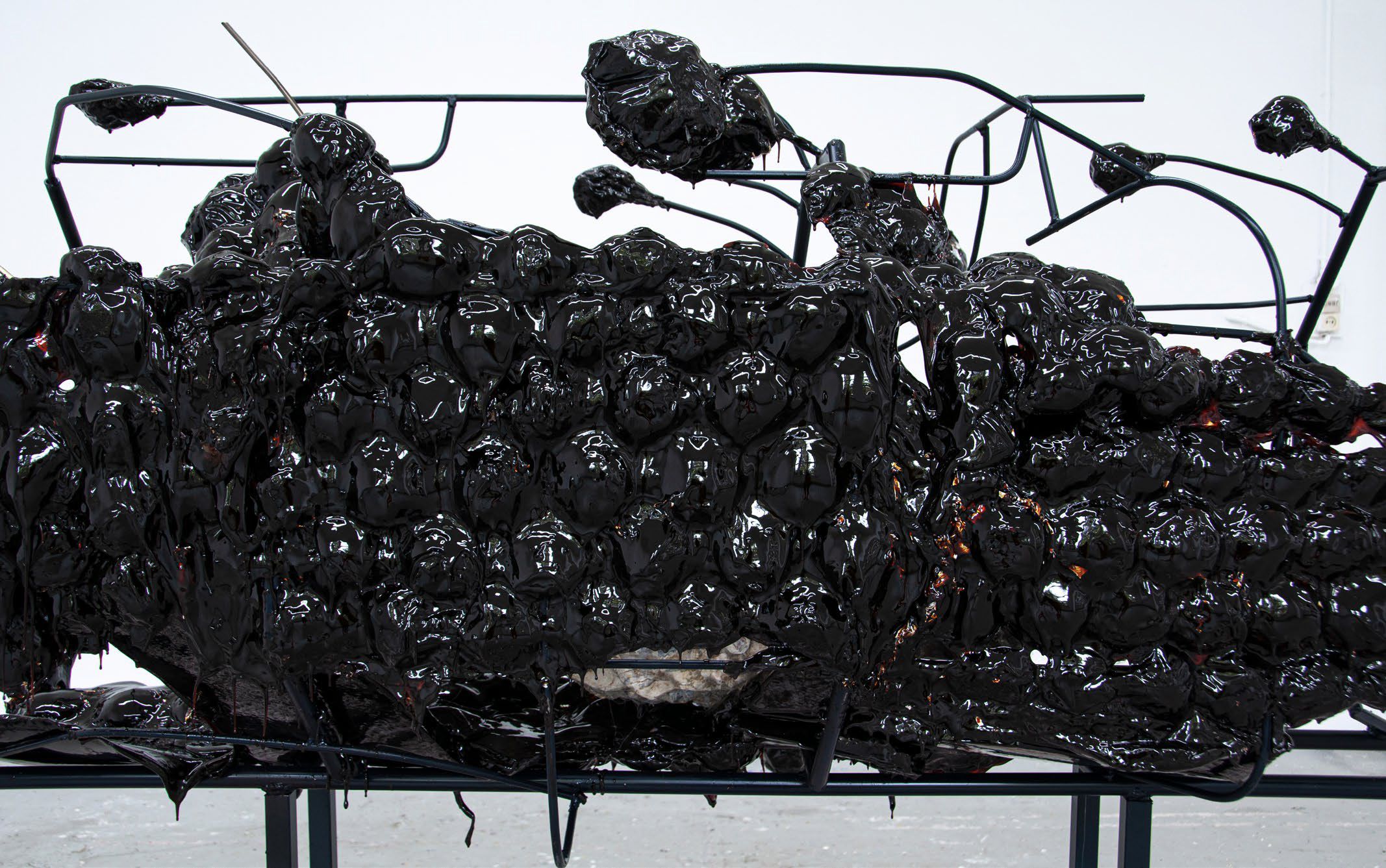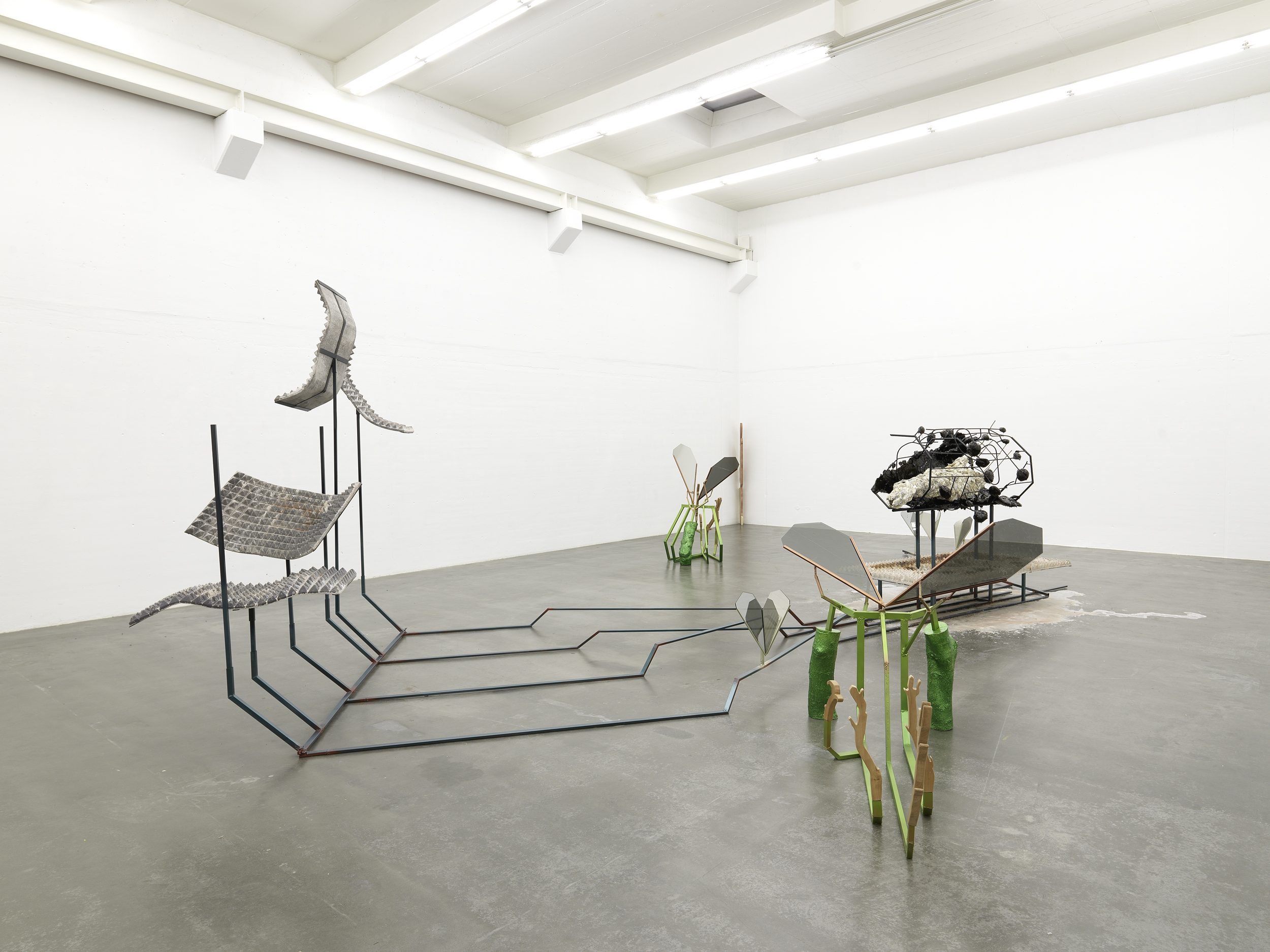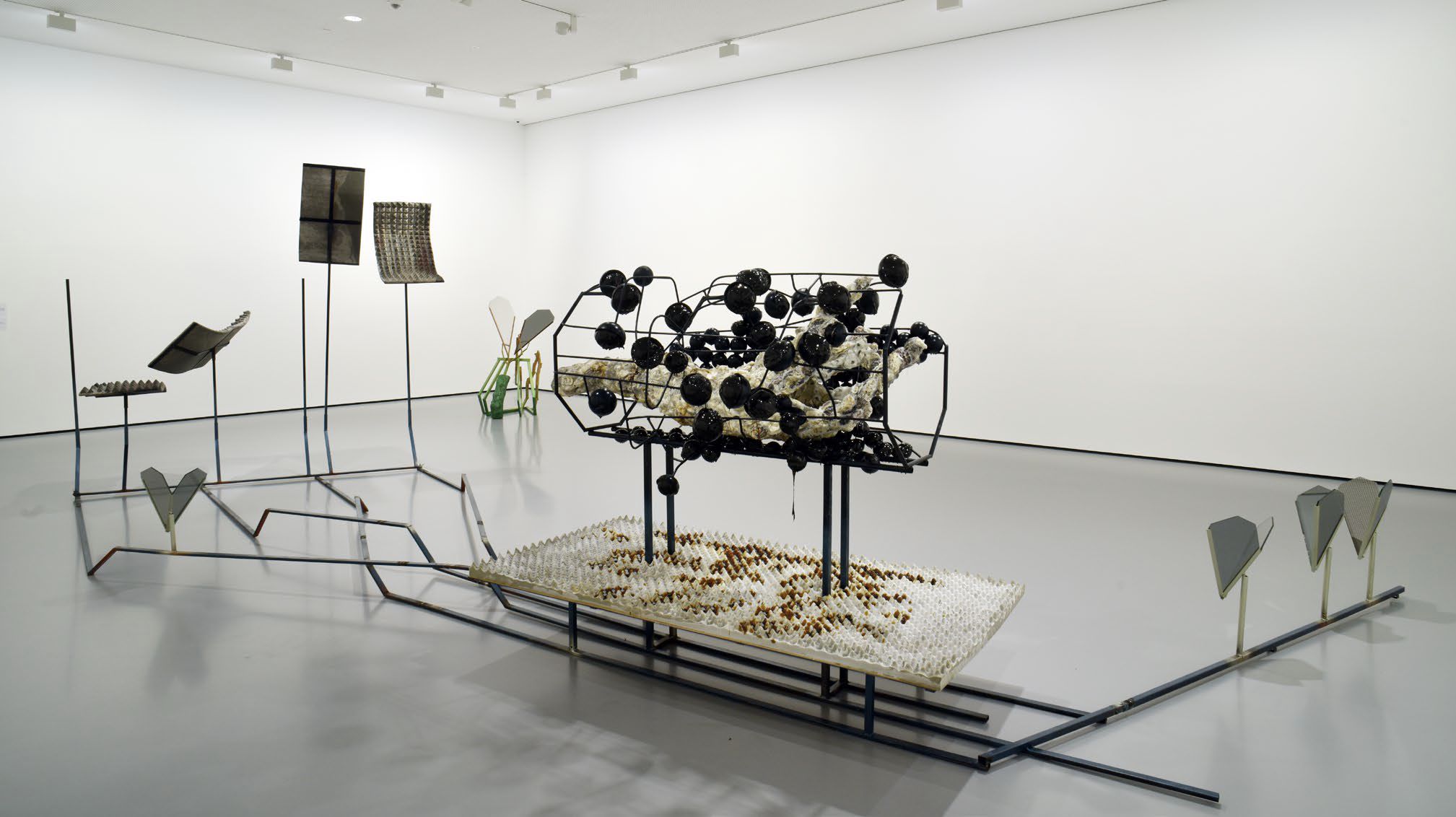Hot House (2019)
“Like Mary Shelley’s Frankenstein (1818), these sculptures resemble creatures, whose ‘component parts might be manufactured, brought together, and endued with vital warmth.’ They seem to be permeated by activity. This happens when the caramel comes into contact with the air and a certain temperature. Modified by oxygen, it changes from a solid to a liquid state. It drips down onto the surrounding surfaces like a life fluid. This is reflected on a more metaphorical level in the use of acoustic foam, which absorbs the sound and waves that surround it. With each movement of the viewer, the mirrors reflect something new. Through these subtle but incessant changes, the sculpture becomes transformed over time. Beyond the fact that it adopts forms of life, it seems to manifest the energy that flows actively between materials and their environment. At the core of Ingarden’s critical analysis, the concept of energy plays a fundamental role in her work. Irrespective of whether it lies in the mutation experienced by caramel, or is simply evoked, it recalls the ideas of transformation reminiscent of those of entropy. Entropy ‘is the last and most mysterious of the five physical quantities (temperature, pressure, volume, internal energy, entropy) that represent the state of a thermodynamic system, i.e. a limited set of materials capable of exchanging heat and working with the external environment.’ But whereas, for Robert Smithson (1938–1973), entropy also corresponds to the irreversible collapse of things and the ‘energy is more easily lost than obtained, and that in the ultimate future the whole universe will burn out and be transformed into an all-encompassing sameness’,iit is not understood by Ingarden as something that necessarily leads to deterioration. Following the ideas of New Materialism, Ingarden regards matter as something active, whether animate or not, and perceives this energy as something that mutually interlinks the bodies.”
– Oriane Durand
Like mushrooms after rain is a direct translation of a Polish saying meaning to grow in abundance and quickly. The piece is inspired by mushrooms and how they mesh between biotic and abiotic parts of the ecosystem. It is an abstract machine in a state of in-between, using the force of life and it’s expanding tendency. Like an energy transformer, fed with light, carbon, humidity, calcium and salt, the installation absorbs, multiplies, splits and reflects the current of energy in the heart shaped double-sided mirrors. The melting vortex-like core evokes the moment of “nontogetherness” or “outsideness”, when the distance between an observing subject and the external object-world crumbles. Whether it lies in the mutation experienced by caramel, or is suggested, the work recalls the ideas of metamorphosis and transformation reminiscent of those of entropy. Entropy that doesn’t necessarily lead only to deterioration, but movement of energy that mutually interlinks the bodies.


Like mushrooms after rain, 2019
acoustic foam crystallised in salt, carbonised sugar, oyster shells, salt, double sided mirror, painted steel
Installation view of the exhibition Hot House, Berthold Pott Gallery, Cologne

Like mushrooms after rain, 2019
in The Power of Wonder, curated by Markus Heinzelmann, Museum Unter Tage, Bochum, Germany